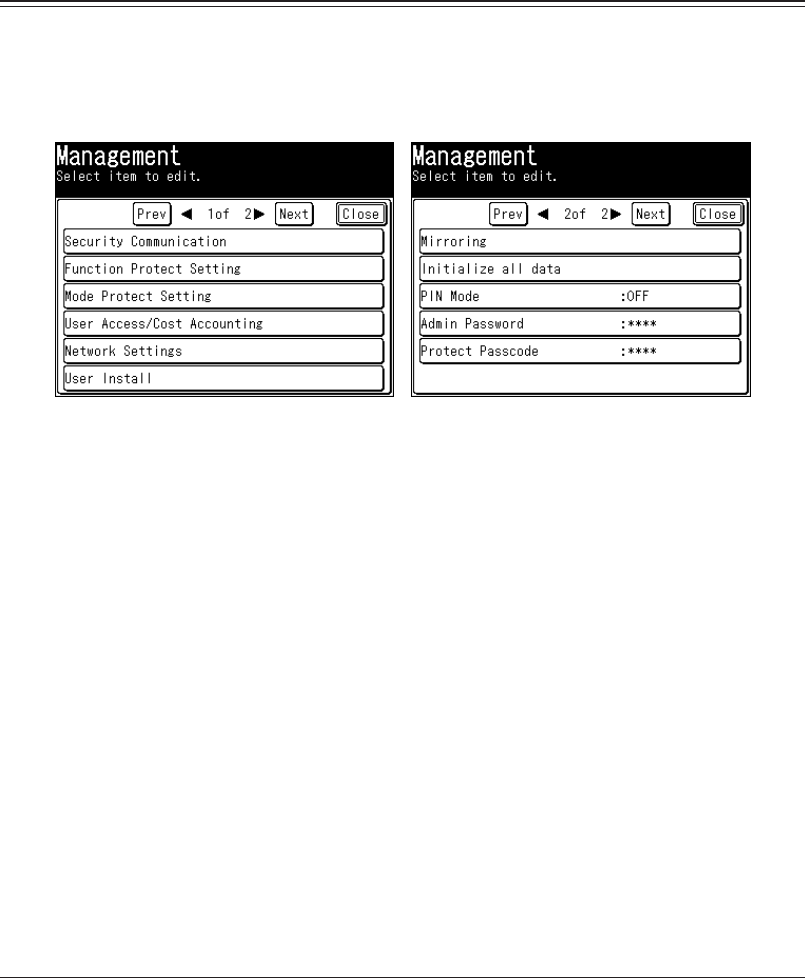
3-12 List of Settings
Sound Settings
You can set the various sound settings.
Refer to Chapter 1, “Specifying Default Settings” in the Administrator's Guide.
Energy Save Mode
You can specify the settings for the low power mode or sleep mode including the time
it takes to switch to those modes, or the time it takes to start the energy save mode.
Regardless of this setting, if you press <Energy Save>, the low power mode will start
immediately.
Refer to Chapter 1, “Specifying Default Settings” in the Administrator's Guide.
[Management] Screen
You can specify the important settings related to the machine, such as the user install
mode and security communication settings, network settings, etc.
If you set an administrator password, a screen for entering the administrator password is
displayed whenever [Management] is pressed, which enables you to prevent users other
than the administrator from changing the settings.
Security Communication
You can specify the various security communication settings, such as closed transmission,
ID check transmission, destination verification, and security reception settings.
Refer to Chapter 2 in the Administrator's Guide.
Function Protect Setting
You can manage the various settings using an administrator password and protect codes.
Refer to Chapter 2, “Function Protect Settings” in the Administrator's Guide.
Mode Protect Setting
You can set the machine to prohibit the copy, scanner, fax, or printer modes from being
used.
Refer to Chapter 2, “Setting Mode Protection” in the Administrator's Guide.
User Access/Cost Accounting
You can check the total number of pages and communication time used by each user for
copies and faxes, set a charge per page, and calculate the total cost each user has incurred
for copies, faxes, scan and prints.
Refer to Chapter 2, “Managing User Access/Cost Accounting” in the Administrator's
Guide.


















